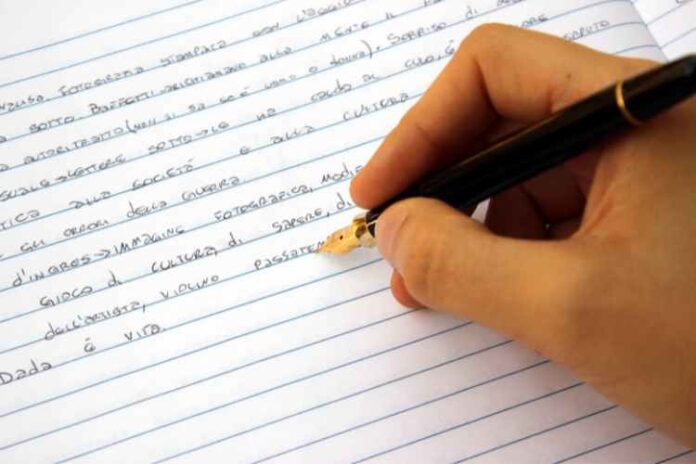A meaningful human experience that goes beyond simple observation is looking at someone. Complex interactions between feelings, perceptions, and interpretations are present. Writing about this act demands skill to capture the subtleties of the meeting and portray the intensity of the feelings involved. In this essay, we will go into the complex details that make the art of expressing the experience of staring at someone a rich and compelling subject.
Describing Looking at Someone in Writing
Looking at someone is an art of capturing emotions through words. The initial glimpse sparks curiosity, drawing you closer like a magnetic force. Their eyes, the windows to the soul, convey unspoken emotions. Non-verbal cues reveal their essence, while beauty leaves you mesmerized. Each moment reveals intricate expressions, unveiling the person’s character. The impact on the beholder stirs emotions, leaving an indelible mark. The context and setting add depth, shaping the experience. With descriptive language and emotional insight, describing looking at someone becomes a powerful portrayal of human connections and the beauty of observation.
1. The Initial Glimpse:
Often, the process of staring at someone starts with a short instant, a quick glance that grabs our interest. Even though it just lasts a split second, it is of utmost importance. It takes careful attention to detail and powerful images to portray the scenario while describing this particular moment.
RELATED – How To Compliment A Guy On His Looks Over Text- Tips and details
2. The Intensity of Connection:
Even at a distance, looking at someone can forge a deep and personal connection. It’s as if a magnetic force pulls us in their direction, making them the center of our universe. To convey the intensity of the situation, metaphors and similes must be used while describing this magnetic attraction.
3. The Eyes: Windows to the Soul:
When staring at someone, the eyes are quite important. They are frequently referred to as the windows to the soul, conveying feelings and ideas that language is unable to express. It’s important to consider the eyes’ color, shape, and the feelings they convey while describing them.
Her hypnotic emerald green eyes conveyed a profound melancholy that tore at my heart and made me wonder about the stories they contained.
4. Unspoken Communication:
Looking at someone can convey feelings and intentions that cannot be expressed in words. Unspoken words are expressed in great detail through body language and facial emotions. Using descriptive language to convey the intricacies of their actions is necessary when describing these non-verbal signs.
His eyes flashed with enthusiasm as he spoke, and a sly grin played across his lips to show how thrilled he was to share his passion.
5. The Impact of Beauty:
Looking at someone has a huge impact on their beauty. It can transcend the mundane and elevate the situation to something exceptional, leaving us enthralled and in awe. In order to convey the essence of beauty, descriptive language must be vivid and poetic.
Her beauty was like a celestial symphony with every facet in perfect harmony, and I was left speechless as I stared in awe at the work of art before me.

6. The Intricacies of Expression:
The act of staring at someone varies throughout time, revealing different facets of the person’s nature. To characterize these intricacies of expression, one must pay attention to their movements, voice, and interactions with others.
His warm, hearty giggle filled the room and spread joy like waves in a calm pond as the corners of his eyes wrinkled.
7. The Impact on the Beholder:
The person being looked at is profoundly affected as well. It arouses feelings, brings back memories, and may even leave a permanent imprint on the soul. Introspection and emotional understanding are necessary to describe the effect on the beholder.
The spark of hope and longing that was ignited by her stare lasted in my heart long after she was gone. Her gaze was like a gentle caress.
8. The Context and Setting:
Without taking into account the environment and context in which it takes place, describing the sensation of looking at someone is incomplete. The setting, lighting, and other factors give the interaction more dimension and have an impact on how it is viewed.
“As he stood by the shore, lost in thought, the sunset painted the sky in hues of orange and pink, casting a warm glow on his face.”
9. Maintain a Consistent Tone
Looking at someone is an art of capturing emotions through words. The initial glimpse sparks curiosity, drawing you closer like a magnetic force. Their eyes, the windows to the soul, convey unspoken emotions. Non-verbal cues reveal their essence, while beauty leaves you mesmerized. Each moment reveals intricate expressions, unveiling the person’s character.
Pick a tone that is in keeping with the feelings and atmosphere of the scene. The tone should remain constant throughout, whether it is romantic, nostalgic, or awe-inspiring.
10. Edit and Revise
After writing your description, edit and revise to ensure clarity and coherence. Trim unnecessary details and refine your language to make the writing more concise and powerful.
RELATED – EXPLORING THE HISTORY AND CULTURAL SIGNIFICANCE OF HERSHEY’S KISSES
Conclusion
A meaningful human experience, looking at someone can elicit a wide range of feelings and insights. Writing about this complex interaction needs a careful balancing act between descriptive language, emotional depth, and contemplation. A meaningful human experience that goes beyond simple observation is looking at someone. Complex interactions between feelings, perceptions, and interpretations are present. Writing about this act demands skill to capture the subtleties of the meeting and portray the intensity of the feelings involved. Often, the process of staring at someone starts with a short instant, a quick glance that grabs our interest. Even though it just lasts a split second, it is of utmost importance. It takes careful attention to detail and powerful images to portray the scenario while describing this particular moment.


